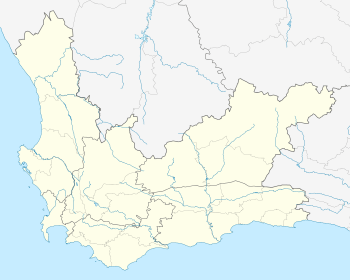Bantry Bay, Cape Town
| Bantry Bay | |
|---|---|
|
Bantry Bay | |
 Bantry Bay  Bantry Bay  Bantry Bay
| |
|
Location within Cape Town  Bantry Bay | |
| Coordinates: 33°55′S 18°22′E / 33.917°S 18.367°ECoordinates: 33°55′S 18°22′E / 33.917°S 18.367°E | |
| Country | South Africa |
| Province | Western Cape |
| Municipality | City of Cape Town |
| Main Place | Cape Town |
| Area[1] | |
| • Total | 0.38 km2 (0.15 sq mi) |
| Population (2011)[1] | |
| • Total | 820 |
| • Density | 2,200/km2 (5,600/sq mi) |
| Racial makeup (2011)[1] | |
| • Black African | 13.8% |
| • Coloured | 7.7% |
| • Indian/Asian | 1.3% |
| • White | 75.5% |
| • Other | 1.7% |
| First languages (2011)[1] | |
| • English | 71.5% |
| • Afrikaans | 12.4% |
| • Xhosa | 3.8% |
| • Zulu | 1.7% |
| • Other | 10.5% |
| Postal code (street) | 8005 |
Bantry Bay is an affluent suburb of Cape Town situated on the slopes of Lion's Head and overlooking a rocky coastline, Western Cape Province, South Africa. Its neighboring suburbs are Sea Point and Clifton. It was originally called Botany Bay after a botanical garden that was planted here for the cultivation of medicinal herbs. The name was changed during World War I.
It is overlooked by Lion's Head, which is an eroded outlier of sandstone. There is a plaque on the seashore that commemorates a visit by Charles Darwin, who made important geological observations here relating to the nature and origin of granite.
Bantry Bay is known to be the most wind-free area in Cape Town. Secluded & protected, the inhabitants of this exclusive area enjoy about 290 wind free days per year - a significant fact given Cape Town's windy climate.
References
- 1 2 3 4 "Sub Place Bantry Bay". Census 2011.
.jpg)
.svg.png)